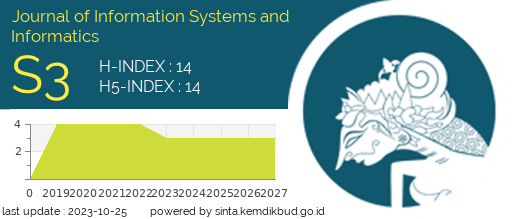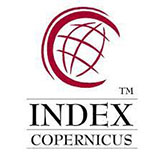Analysis of Travel Agent Online Marketing Strategies on Social Media Content Using Sentiment Analysis and Social Network Analysis
Abstract
The growth and development of the internet users have given Indonesia an opportunity to develop internet-based services, such as online travel agents (OTA). Along with this OTA development, conventional travel agents were declining. Many conventional travel agents have decided to switch to online travel agents. The emergence of new OTAs has also made OTAs competition more challenging. Thus, a lesson learned from the market leader OTA is expected to help new OTAs surviving the competition. This research uses the sentiment analysis method to understand consumers' perceptions towards OTA and uses the social network analysis method to recognize actors who play significant roles in the travel agent business network. Lastly, the marketing strategies of the major and well-known OTAs perceived by online consumers was analyzed. Using the data collected from three major OTAs social media network (i.e., Traveloka, Tiket, and Booking), it was found that the general impression of consumers towards OTA is a positive sentiment. Furthermore, each key actor for each OTAs can be recognized. Lastly, marketing strategies can be proposed, namely by providing the complete product offerings, provide competitive price, creating special promos for consumers, promotion to be carried out on all social media using Bahasa Indonesia, and make the products offered available throughout Indonesia and can be used by everyone, especially travelers.
Downloads
References
S. Alhadar, O. S. Nusu, I. Laky, and R. Amir, “Analisis Manajemen Strategi Bisnis Travel Agent di Masa Pandemi Covid 19,” PUBLIK: Jurnal Manajemen Sumber Daya Manusia, Administrasi dan Pelayanan Publik, vol. 8, no. 2, pp. 269–270, 2021.
T. A. Philemon, I. B. Sundjaja, and A. Budiono, “Studi Kelayakan Bisnis Online Travel Agent,” Jurnal Administrasi Bisnis, vol. 14, no. 1, pp. 1–19, 2018.
P. A. Kadir, “Strategi Marketing melalui Online Travel Agent dalam Meningkatkan Tingkat Hunian Kamar di Training Center Damhil Universitas Negeri Gorontalo,” Ideas: J. Pendidikan, Sos. dan Budaya, vol. 6, no. 2, p. 147, 2020, doi: 10.32884/ideas.v6i2.276.
D. S. Janal, “Online Marketing Handbook: How To Sell, Advertise, Publicize, And Promote Your Products And Services On The Internet.” 1995.
A. C. Setiaboedi, “Penyusunan Strategi Pengembangan Bisnis PT. Prima Wisata Dunia Dalam Upaya Mempertahankan Pelanggan,” Agora, vol. 5, no. 1, pp. 1–6, 2017.
H. Utami, A. A. Purnama, A. N. Hidayanto, S. H. Utami, A. A. Purnama, and A. N. Hidayanto, “Fintech Lending in Indonesia: A Sentiment Analysis, Topic Modelling, and Social Network Analysis using Twitter Data,” International Journal of Applied Engineering & Technology, vol. 4, no. 1 pp. 50-56, 2022.
M. S. Setatama and D. Tricahyono, “Implementasi Social Network Analysis pada Penyebaran Country Branding ‘Wonderful Indonesia,’” Indones. J. Comput., vol. 2, no. 2, p. 91, 2017, doi: 10.21108/indojc.2017.2.2.183.
P. Gupta, S. Kumar, R. R. Suman, and V. Kumar, “Sentiment Analysis of Lockdown in India during COVID-19: A Case Study on Twitter,” IEEE Trans. Comput. Soc. Syst., vol. 8, no. 4, pp. 939–949, 2021, doi: 10.1109/TCSS.2020.3042446.
A. Rahman and M. S. Hossen, “Sentiment Analysis on Movie Review Data Using Machine Learning Approach,” 2019 Int. Conf. Bangla Speech Lang. Process. ICBSLP 2019, pp. 27–28, 2019, doi: 10.1109/ICBSLP47725.2019.201470.
L. Yang, Y. Li, J. Wang, and R. S. Sherratt, “Sentiment Analysis for E-Commerce Product Reviews in Chinese Based on Sentiment Lexicon and Deep Learning,” IEEE Access, vol. 8, pp. 23522–23530, 2020, doi: 10.1109/ACCESS.2020.2969854.
D. M. Prabhawa, D. Rahayu, and Susi, “Penentuan Top Kampanye Pemasaran Menggunakan Social Network Analysis Pada Shopee Dan Tokopedia Di Media Sosial Twitter Determination Of Top Marketing Campaign Using Social Network Analysis On Shopee And Tokopedia On Social Media Twitter,” Translitera, vol. 11, no. 1, pp. 2088–2432, 2022.
R. A. Masrury, Fannisa, and A. Alamsyah, “Analyzing tourism mobile applications perceived quality using sentiment analysis and topic modeling,” 2019 7th Int. Conf. Inf. Commun. Technol. ICoICT 2019, pp. 1–6, 2019, doi: 10.1109/ICoICT.2019.8835255.
A. Alsaeedi and M. Z. Khan, “A study on sentiment analysis techniques of Twitter data,” Int. J. Adv. Comput. Sci. Appl., vol. 10, no. 2, pp. 361–374, 2019, doi: 10.14569/ijacsa.2019.0100248.
C. S. Hudaya, H. Fakhrurroja, and A. Alamsyah, “Analisis Persepsi Konsumen Terhadap Brand Go-Jek Pada Media Sosial Twitter Menggunakan Metode Sentiment Analysis dan Topic Modelling,” J. Mitra Manaj., vol. 3, no. 6, pp. 664–673, 2019, doi: 10.52160/ejmm.v3i6.244.
W. Ignatio, M. Rizqy, D. Putra, and K. Bratawisnu, “Penentuan Top Brand Menggunakan Social Network Analysis pada E-Commerce Bukalapak dan Tokopedia,”, Journal Information Engineering and Educational Technology, vol.2, 2549, p.869x, 2018.
C. Wyrwoll, User-Generated Content. 2014. doi: 10.1007/978-3-658-06984-1.
E. Nurhazizah, R. Nur Ichsan, and S. Widiyanesti, “Analisis Sentimen Dan Jaringan Sosial Pada Penyebaran Informasi Vaksinasi di Twitter,” J. Swabumi, vol. 10, no. 1, pp. 24–35, 2022.
M. Anandarajan, C. Hill, and T. Nolan, “Text Preprocessing,” in Practical text analytics: Maximizing the value of text data, Springer, pp. 45–59, 2019. doi: 10.1007/978-3-319-95663-3_4.
A. Syaifuddin, T. Informasi, R. A. Harianto, T. Informatika, J. Santoso, and T. Informatika, “Analisis Trending Topik untuk Percakapan Media Sosial dengan Menggunakan Topic Modelling Berbasis Algoritme LDA,” J. Intell. Syst. Comput., pp. 12–19, 2020.
M. K. Bratawisnu and A. Alamsyah, “Social Network Analysis Untuk Analisa Interaksi User di Media Sosial Mengenai Bisnis E-Commerce,”in Sosiohumanitas, Vol. 21, no. 1, pp. 63-69 2019. doi: 10.36555/sosiohumanitas.v21i1.1000.
P. Kotler and G. Amstrong, “Dasar-Dasar Pemasaran. Jilid 1 Edisi Terjemahan 9.” Jakarta: PT Gramedia Pustaka, 2009.
E. F. Tarantein, B. S. Sulasmono, and A. Iriani, “Perencanaan Strategi Marketing Mix Dalam Meningkatkan Kuantitas Peserta Didik,” JMSP (Jurnal Manajemen dan Supervisi Pendidikan, vol. 3, no. 4, pp. 156–169, 2019.
 Abstract views: 1947 times
Abstract views: 1947 times Download PDF: 1382 times
Download PDF: 1382 times
Copyright (c) 2023 Journal of Information Systems and Informatics

This work is licensed under a Creative Commons Attribution 4.0 International License.
- I certify that I have read, understand and agreed to the Journal of Information Systems and Informatics (Journal-ISI) submission guidelines, policies and submission declaration. Submission already using the provided template.
- I certify that all authors have approved the publication of this and there is no conflict of interest.
- I confirm that the manuscript is the authors' original work and the manuscript has not received prior publication and is not under consideration for publication elsewhere and has not been previously published.
- I confirm that all authors listed on the title page have contributed significantly to the work, have read the manuscript, attest to the validity and legitimacy of the data and its interpretation, and agree to its submission.
- I confirm that the paper now submitted is not copied or plagiarized version of some other published work.
- I declare that I shall not submit the paper for publication in any other Journal or Magazine till the decision is made by journal editors.
- If the paper is finally accepted by the journal for publication, I confirm that I will either publish the paper immediately or withdraw it according to withdrawal policies
- I Agree that the paper published by this journal, I transfer copyright or assign exclusive rights to the publisher (including commercial rights)






















_1.png)












